
1929 Graham Paige Sport

All photography work is copyrighted by the author, please don't download and publish these pictures in the internet without my permission!
Larger high quality pictures is available only for donators up on request! Vasileios Papaidis 2017 © All Rights Reserved
Forza Argentina!
Why "Forza Argentina" for a "made in USA" car brand like Graham Paige?
The history of Graham-Paige in Argentina has a key antecedent, the union of the Graham-Paige Motors Corporation, and its division "Graham-Paige Int. Corporation".
In the middle of 1927, brothers Joseph, Robert, and Ray Graham, after having made with great success in the manufacture and commercialization of the trucks "Graham Brothers", decided to try luck in the field of the automobiles.
To their great commercial and industrial abilities, they added a touch of quality and refinement, acquiring the stock of a major automobile factory of the time: the "Paige-Detroit Motor Car Company", which made cars "Paige "" Jewett, "and" Paige Detroit. "
At the end of 1927, they communicated to the press the creation of the new corporation, and during the month of January of 1928, the first Sales Conventions, led by Robert Graham, in their capacity as Director General of Sales, were developed.
From that moment on, the task of naming representatives around the world began.
In Argentina, more specifically in Buenos Aires, a representation of the "Graham-Paige International Corp." , office in charge of James Warner Jr., located in Pasaje Güemes nº 702.
In turn, the company "Victor Irureta Sociedad en Comandita" was named as the official representative of the brand, who was known for his various inventions and technological advances related to the automobile, which had been made known and published in numerous related magazines to the activity.
"Víctor Irureta" had its facilities in the city of Buenos Aires, in the district of Caballito, in the street Otamendi nº 520/534.
There the different units worked, just as if it were a concessionaire of our day.
In a warehouse located in the middle of the street (Otamendi 555), the unpacking sector of the wooden containers that served as the packaging of the cars, and their final assembly, worked.
In the dependencies of "Víctor Irureta" the automobiles were not assembled, since these already came assembled of the United States. This explains in a way the fact that most of the Graham-Paige introduced into Argentina (if not all) maintained the leadership on the left as it had always been in that country. It should be remembered that in those years, and until the end of World War II, in Argentina the direction was on the right (as in England and Japan today).
However, and simply as a curious fact, the cars introduced in Uruguay, through its importer "Frugoni Hermanos" that still exist, did come with the wheel to the right.
It is noteworthy that from the factory came cars mounted in both directions, at the request of each dealer.
Like the "Graham Brothers", the company "Víctor Irureta" also gradually became an important network of distributors and representatives throughout the country. In 1930, there were representatives in the provinces of Buenos Aires, Catamarca, Corrientes, Chaco, Entre Ríos, La Pampa, Mendoza, Neuquén, Río Negro, Salta, San Juan, San Luis, Santa Fe, Santiago del Estero and Tucumán .
This wide network of Representatives and Distributors had, as a communication element, a publication called "Muñeca", printed on superfine paper sedated of high quality, where they mentioned the novelties of the mark both local and the head office.
The subtitle of the magazine was: "Graham-Paige Pro-Broadcast Magazine". This publication was available to Graham-Paige's customers.
In addition, the magazine incorporated notes on sports activities related to the brand, technical data of different models, literature, entertainment, etc ...
Much of the information presented in this story has been extracted from an extraordinary number of 1931.
Another aspect that served for the diffusion of Graham-Paige in Argentina, was the one related to the motorsport sport.
In competitions, both speed and regularity, such names as Juan Zerba Balbi, Félix Alvarez, and Paris Gianinni (who died in an accident), who ran as "official" pilots of the brand.
At this point, it is good to talk about the characteristics of the Graham-Paige cars. They were solid cars, with different engines and displacements in 6 and 8 cylinders.
They had hydraulic brakes on all four wheels, 7-gang blocks, electric gasoline pump, coincidental contact lock and steering lock, among other advanced solutions for the time.
For its part, details of finishing, such as chrome, polished alpaca boards, safety glasses, and options such as spoke wheels, double spare wheel, etc. were taken care of.
High quality materials were used in all its components.
Graham Paige History
The Graham-Paige was an American automobile company organized in 1927 when brothers Joseph B., Robert C. and Ray A. Graham acquired the Paige-Detroit Motor Company. Graham manufactured a line of mid-range cars through the 1930's. No longer involved in automobile manufacturing, the company still exists as a successful real estate firm. The company started in 1919 in the Heartland America city of Evansville, Indiana. The Midwestern states in the U.S. are considered Heartland America and the agricultural center of the country.
The Graham brothers were successful businessmen with interests in several industries. Their first business venture was in the manufacture of glass bottles. It was the Graham brother's glass company that developed the technique of manufacturing glass bottles upside down, which permitted the molten glass to build up around the crown. The strengthening of the crown in turn made the bottle strong enough to use a cap instead of a cork. Their glass company eventually became part of the Owens Glass Co., now the "O" in L-O-F - Libby-Owens-Ford.
From there the Graham brothers began building kits to modify Model T and TT vehicles into trucks. That lead to the brothers building their trucks using engines of various manufacturers. Eventually they settled on Dodge Brothers engines, and soon the trucks were sold by Dodge Brothers dealers. The firm expanded from its beginnings in Evansville, Indiana, opening plants in Detroit, Michigan, and Stockton, California. The Canadian market was supplied by the Canadian Dodge Brothers plant. The Dodge Brothers company purchased the Graham Brothers truck firm in 1925, and the three Graham brothers took on executive positions at Dodge Brothers.
In 1927, with the banking syndicate that controlled Dodge Brothers making moves to sell the company, the Graham brothers decided to enter the automobile business on their own. In 1927 they purchased the Paige-Detroit Motor Company, a manufacturer whose history dated back to 1909, for $4 million.
The company's initial offering included a line of Graham-Paige cars with six and eight cylinder engines. For a while a line of light trucks was offered under the Paige name, but that was soon discontinued. The Graham earned a reputation for quality and sales quickly rose. Graham also had some success at the race tracks which helped boost sales.
Initially Graham-Paige withstood the onset of the depression well, but sales fell as the decade wore on. The 1932 models, called "Blue Streak", introduced a number of innovative ideas. The most copied was the design feature enclosing the fenders, thus covering the mud and grime built up on the underside. The radiator cap was moved under the hood, which itself was later modified to cover the cowl and end at the base of the windshield.
For engineering, the rear kickup on the chassis frame was eliminated by the adoption of a 'banjo' frame. Unlike normal practise, the rear axle was placed through the frame, with the frame having a large opening on both sides, with rubber snubbers to absorb any shock if the car axle should hit the frame. This in turn permitted a wider body. And to help lower the car, the rear springs were mounted on the outer sides of the chassis frame and not under the frame. It was an idea the was eventually copied by all manufacturers - Chrysler, for example, in 1957.
For 1934 Graham introduced a camshaft-driven supercharger. At first offered only the top eight cylinder models, when the eights were dropped for 1936 the supercharger was adapted to the six.
By 1935 the "Blue Streak" styling was getting rather dated. A restyling of the front and rear ends for 1935 proved to be a disaster, making the cars appear higher and narrower. Having no money for a new body, Graham signed an agreement with Reo to purchase their Hayes-built body, paying Reo $7.50 in royalties for each one.
Amos Northup of Murray Body was hired to design a new model for 1938. He died before the design was complete. The new 1938 Graham was introduced with the slogan "Spirit of Motion". The car looked as if it was going 60 mph when it was standing still. The fenders, wheel openings and grille all appeared to be moving forward. Sadly, the cut back grille was not that attractive and the car gained the name "sharknose". The 1938 styling was a complete flop in the sales department and Graham limped through 1939 and 1940.
Desperate for a winning offering and unable to retool, Graham made a deal with Hupp Motor Co. in late 1939. According to the deal, the faltering company entered into an arrangement with Hupmobile to build cars based on the body dies of the stunning Gordon Buehrig designed Cord 810/812. Cord ceased production in 1937 following the bankruptcy of Auburn-Cord-Duesenburg. In an effort to remain in business Hupp had acquired the Cord dies, but lacked the financial resources to build the car. Their brand new 1938 models had been even less successful than the 1938 Graham.
Graham agreed to build the Hupp Skylark on a contract basis, while receiving the rights to use the distinctive Cord-Skylark dies to produce a similar car of its own, to be called the Hollywood. The striking Skylark/Hollywood differed from the Cord in that it had a shorter hood and conventional headlights. The Cord's long hood was not needed as the Hupp and Graham versions were rear wheel drive. This also necessitated modifying the floor to accept a driveshaft.
However, the Hollywood did not stop the company's slide. The company suspended manufacturing in September, 1940, only to reopen its plant for military production for World War II.
The company resumed automobile production in 1946 producing a new car, the Frazer, named for Graham-Paige President Joseph Washington Frazer, in partnership with Henry J. Kaiser. It also began production of farm equipment under the Rototiller name. In August 1945 Graham-Paige announced plans to resume production under the Graham name, but the plan never materialized. On February 5th, 1947, Graham-Paige's stockholders approved the transfer of all their automotive assets to Kaiser-Frazer, an automobile company formed by Frazer and industrialist Henry J. Kaiser, in return for 750,000 shares of Kaiser-Frazer stock and other considerations. Graham's manufacturing facilities on Warren Avenue were sold to Chrysler Corporation who used the plants first for DeSoto body and engine production, and finally for assembly of the Imperial for the 1959, 1960 and 1961 model years.
Graham-Paige dropped the "Motors" from its name and went into the real estate business, buying up such properties as the Roosevelt Raceway in New York and the Madison Square Gardens. In 1962 the firm changed its name to the Madison Square Garden Corporation.

This is the most exciting image from these events in Italy, beautiful landscapes in nature and amazing classics like this one, our crew from the daily Circuito Di Avezzano
Peppe Agueri (IT) - Vasileios Papaidis (GRE) with a special car, Graham Paige Sport from 1929
the Argentinian competitor fom the magic era of '30s, what an experience!
Photo Gallery
 |  |  |
|---|---|---|
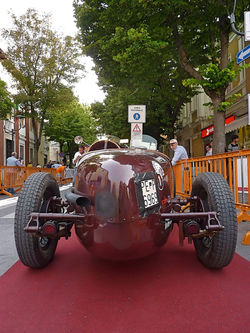 |  |  |
 | 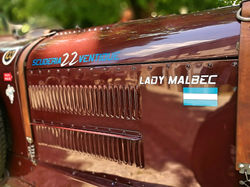 |  |
 |  |  |
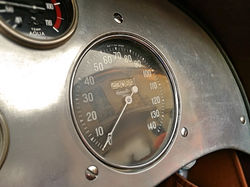 | 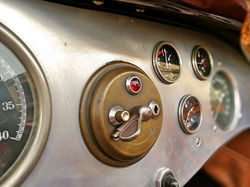 |  |
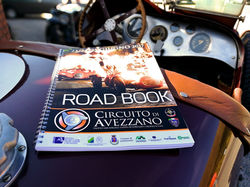 |  | 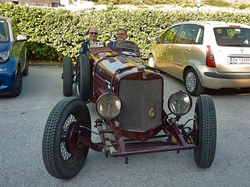 |
 |
Action photographs from official Circuito Di Avezzano by Luca Bravi
 |  |  |
|---|---|---|
 |  |  |
 |
Another one Graham Paige Sport spotted in Argentina!

